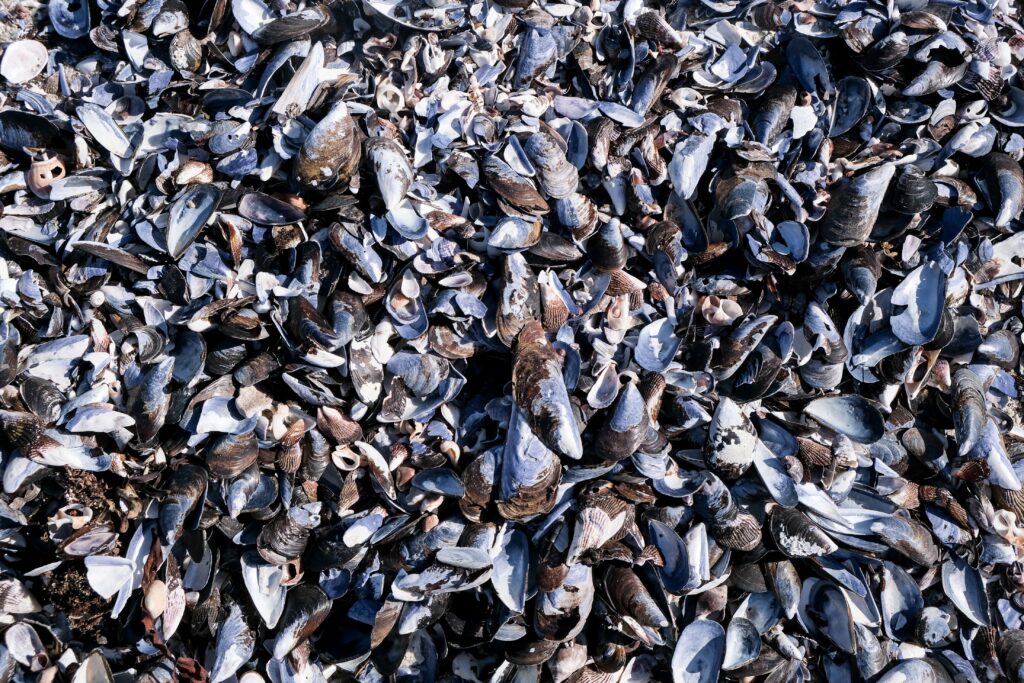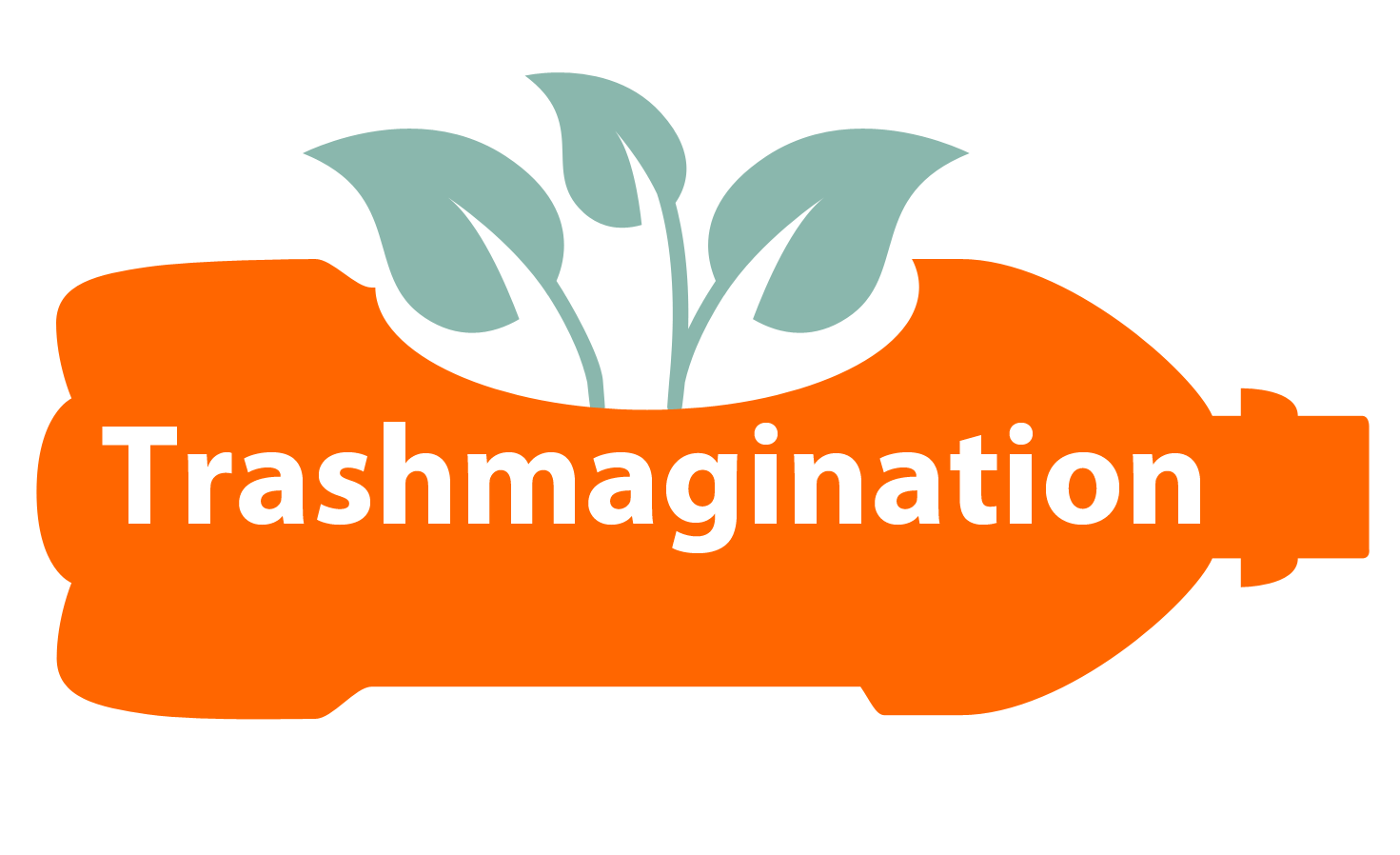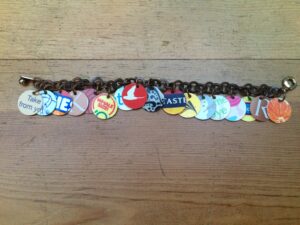Trashmagination is all about encouraging you to creatively reuse found items and recyclables to make art. However, some materials can be hazardous to your health if you don’t take precautions when working with them. Whether you are grinding, gluing or melting these materials, you should not assume everything is 100% safe to creatively reuse. Here are 8 materials you need to evaluate carefully before you creatively reuse them.
You can listen to my podcast episode on creative reuse safety from November 2020 in this YouTube video:
- Shellfish Shells
Check out this article by Gillian Genser about how working with mussel shells in her sculpture had major health impacts – this article inspired this episode of Trashmagination.

2. VHS and Cassette Tapes
Some artists like to crochet, knit or weave the plastic tape inside cassettes to make sculptures or clothing. But be careful since the chemicals on the plastic tape can degrade and become dust you could inhale. Learn more about the challenges of creatively reusing VHS and cassette tapes on the blog Crafting a Green World.
Check out this incredible trash fashion outfit which won the 2019 Junk Kouture contest in Ireland – made from cassette tape film:
3. Plastic Mardi Gras Beads
Check out episode 71 of Trashmagination which goes into detail about these beads.
4. Plastic Glitter
Plastic glitter is a combination of plastic and aluminum, and it is a micro-plastic. These are spread throughout the environment and don’t break down. Learn more about plastic glitter alternatives from companies such as BioGlitz and EcoStardust.

5. Nail Polish
Both nail polish and nail polish removers are full of chemicals. If you use them to add color to your dishes, be careful not to put them on surfaces where you serve food. Check out the Trashmagination podcast episode about creative reuse of cosmetics.
6. Wood Pallets
Some pallets are treated with chemicals. Learn which wood pallets are safe to creatively reuse. Check out the Trashmagination podcast episode about creative reuse of scrap wood.

7. Pastels and Paints
Many pastels and paints contain chemicals that make them toxic for use if you use them often. Research safety protocols for many art supplies in this document by the US Consumer Products Safety Commission.

Pastel artist Zaria Forman always wears latex gloves to protect herself when using pastels. The artist Martin Thomas Smyczek II made a portrait of Zaria using her pastel-stained gloves. Check out this interview with Martin on the podcast The Creative Push.
8. Bird Feathers, Eggs and Nests
Items that come from birds may seem fine if you find them on the ground but they are protected by various laws in the United States and you must apply for a permit if you want to creatively reuse them.



